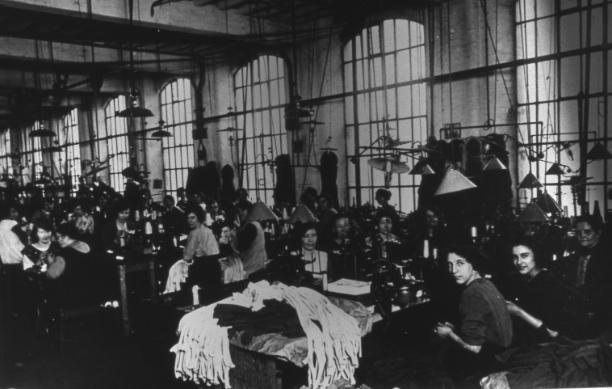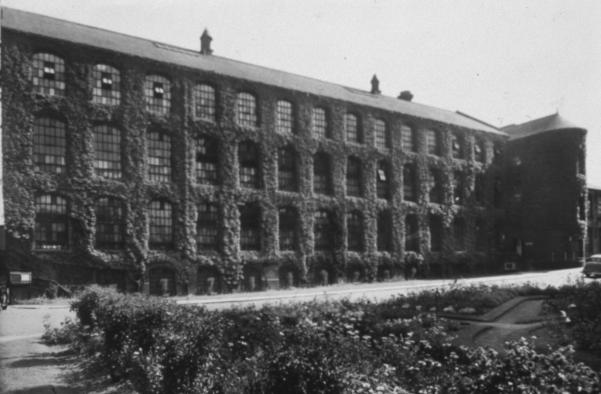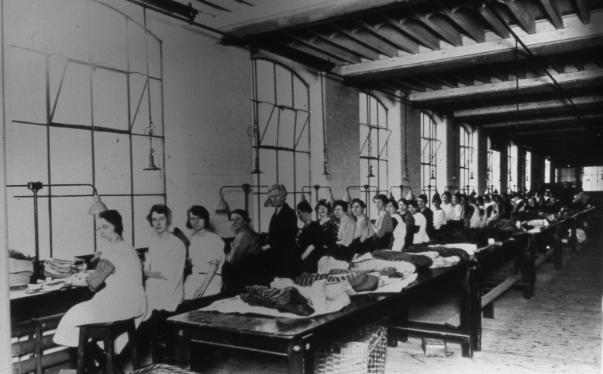Arnold Mill
Arnold Mill
1791 was a big year for Arnold. Two events happened during this year which were to change Arnold forever.
The first was the Enclosure Award which enclosed common land and gave it to established landlords. The second was that two Nottingham businessmen decided that Arnold was the ideal place to build their new mill.
Wool was the main material for cloth at the time and worsted cloth made from long wool was very much in demand. It was very hard wearing and therefore suitable for work clothes and army uniforms. The mill they built was a worsted mill.

Business partners John Hawksley and Robert Davison could see that the area that is now Arnot Hill Park, had all the things they required for their new enterprise. Their move out of Nottingham was forced due to overcrowding and a lack of suitable land. The river Leen was both over used to power the existing mills and heavily polluted.
The enclosure of the land of what is now Arnot Hill Park provided an available site with water for power and good road connections to Nottingham and the north.

Hawksley and Davison leased 12 acres of land between Nottingham Road and Arnot Hill Road from the new owners of what had been South Field before the enclosures. Arnold already had a large number of framework knitters who would provide the businessmen with a semi trained work force. The trades that already sustained the framework knitters would be ideal to support their new factory.
Work on the new mill commenced in 1791 and was completed in 1793. It was the biggest mill of its type ever built. Over six floors high, it was powered by a water wheel. This in turn was fed from the Day Brook via a newly built mill pond.
John Hawksley built himself a house on some of the land, Arnot Hill House still exists. The mill pond became an ornamental lake as well as a functional water supply for the mill. Robert Davison built himself a house on what is now High Street which also still exists and is now called Bonington House (the Labour Club).
The population of Arnold was about 4,000 at the time and at its height the mill employed 1,500 people with 500 more out-workers. When you add to this the businesses that supplied the mill with goods, food stuffs and serviced the mill, all of Arnold was directly or indirectly dependent on the mill for their livelihood.
The scale of this enterprise, in the early part of the industrial revolution, was immense. To put into context, the largest Arkwright mill employed 300 people and was insured for £2,500 whereas Hawksley and Davison’s mill employed 2,000 people and was insured for £12,000.

Although conditions in the mill were grim, Arnot Hill Mill was one of the most humane in the country. Low wages and child labour were the norm. To supplement the workforce, over 500 children were brought up from workhouses in Bristol and London. The average age of these apprentices was 12 years old. They were provided with accommodation in a specially built Apprentice house on the other side of Nottingham Road which came to be called Cottage Row (opposite the park entrance).
© Bob Massey
